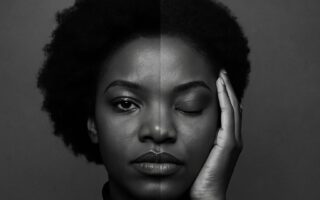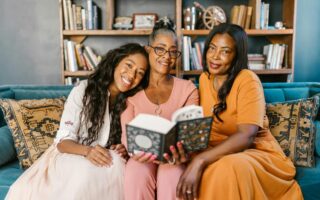When HBO’s The White Lotus first aired, it promised sun-soaked luxury with a side of satire. And it delivered: sharp commentary, beautiful views, and a rotating cast of wealthy guests caught in their own messy webs. But for many Black women watching, it raised a quieter question: Where are we in this story?
A Foot in the Door, But Not a Seat at the Table
Season 1 introduced us to Belinda Lindsey, played by Natasha Rothwell, the warm, grounded spa manager at the Hawaiian resort. What many viewers didn’t know is that the role wasn’t originally written for a Black woman. Once Rothwell was cast, she worked with creator Mike White to bring authenticity to Belinda’s story. Rothwell made sure Belinda felt real: a professional Black woman who’s emotionally savvy, generous, and yes, tired of being everyone’s emotional support while her own dreams stay out of reach (Business Insider).
In an interview with Vanity Fair, Rothwell said she wanted Belinda to be “a real Black girl,” not just a side character to serve others’ arcs. And yet, in the show, that’s exactly what happens. A wealthy white guest dangles the promise of a business partnership, only to ghost her once the vacation high fades (Vanity Fair).
It was intentional. The White Lotus critiques how easily white women can tokenize or emotionally extract from Black women, even with the best of intentions. For many of us, that stung with a little too much truth.
Who Gets to Travel (and Who Gets Watched While They Do)?
There’s also Paula (Brittany O’Grady), a Gen Z college student traveling with her affluent white best friend’s family. As one of the few non-white guests, Paula brought discomfort to the surface, calling out the resort’s colonial undertones and questioning the ethics of watching Hawaiian workers perform “native” rituals for tourist entertainment. Her rebellion was complicated, clumsy, and necessary. But unlike other characters, Paula didn’t get a redemption arc, just a flight home and a warning.
For a show that often flips gender power dynamics (many of the women do come out on top), it doesn’t always dig deep when it comes to race. It leaves room for critique, and that’s a good thing.
So, Where Do We Go From Here?
Let’s be real. The White Lotus isn’t “for” Black women. But that doesn’t mean we can’t be in the room, or better yet, on the beach. The show brings up questions that matter to us at The BWN:
- Who gets to indulge in luxury?
- Who’s allowed to travel just to be, without performing, working, or justifying?
- What does it mean to show up as a Black woman in a space that wasn’t designed with you in mind?
Rothwell, in fact, spoke to this directly. She called for more images of Black women “taking up space in luxury,” especially in travel. She said we deserve to be seen not just working in paradise, but relaxing in it, thriving in it, owning it (PopSugar).
Representation Goals: Not Just on Screen, But in Real Life
We’re excited to see Rothwell return in Season 3, not just as Belinda, but as a more developed, empowered version of her. But we also know one or two characters aren’t enough. The future of travel TV (and luxury in general) should include more stories about us, from mother-daughter spa retreats to girl trips, solo healing journeys, and everything in between.
And while we wait for Hollywood to catch up, we’ll keep creating spaces where Black women and their families don’t need an invitation to enjoy the good life. We’re already living it.










